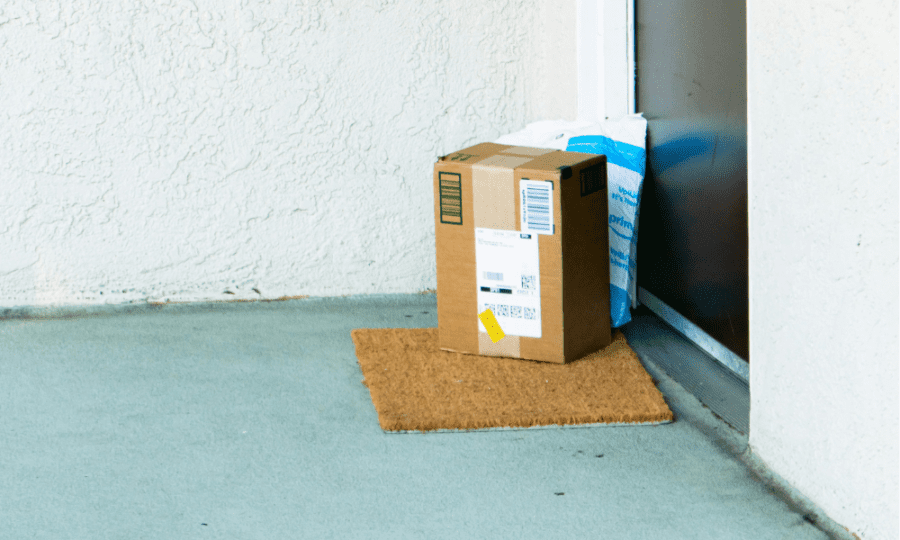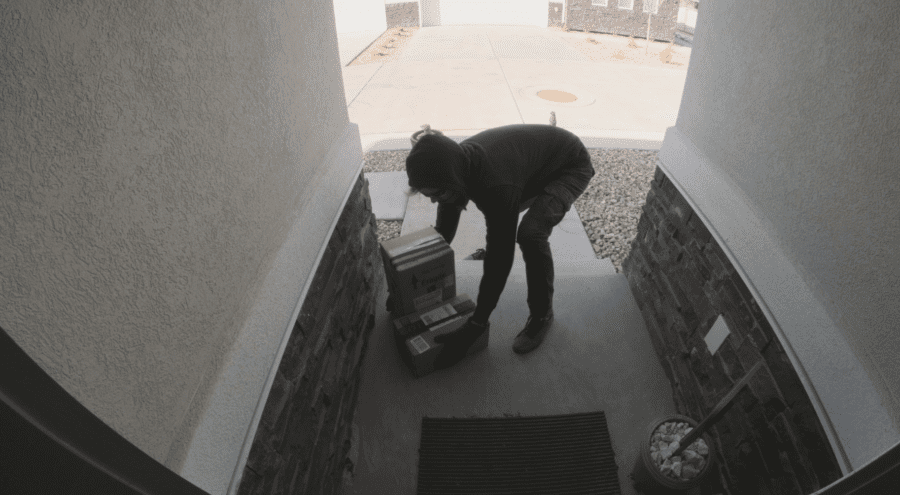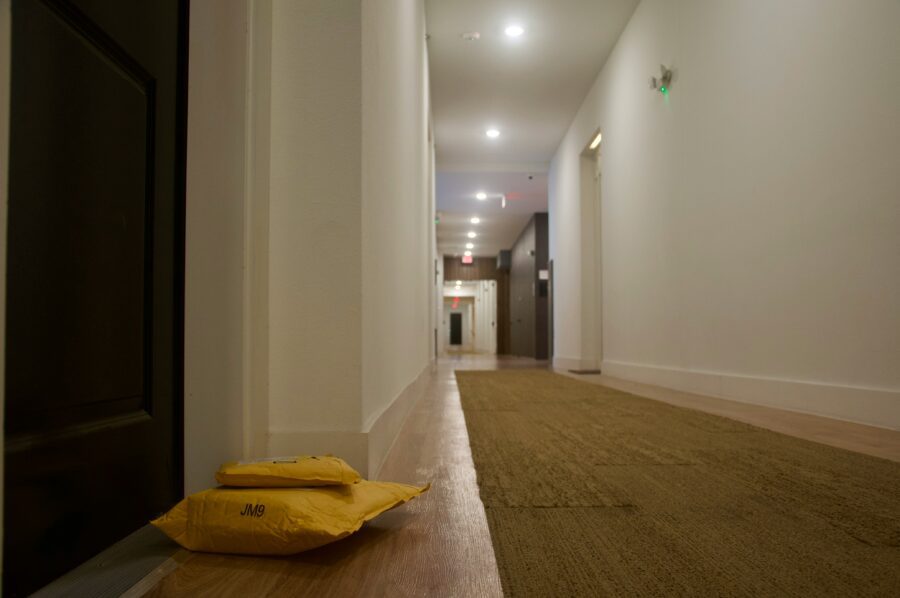
Our Blog
Improving The In-Store Experience
Written by: Parcel Pending
6 Min Read
Published: December 30, 2021
Updated: May 9, 2024
Updated May 1, 2024
2021 was a perfect storm for retailers as they struggled with labour shortages, material scarcity, and supply chain bottlenecks. The strategies for 2023 and beyond, however, will demonstrate how retailers will pivot to combat these issues to improve the in-store experience.
Ready to take your retail store to the next level? Here are 6 tips for how to improve the in-store retail experience:
Technology to the Rescue
Technology is becoming a weapon as well as a competitive advantage for retailers. If you want to know how to enhance the retail customer experience, you should stay abreast of emerging trends, such as self-checkout options and automation. These retail innovations can help offset reliance on workers, allowing them to spend more time on customer engagement and customer service support on the sales floor. Walmart in the United States, for example, uses automated bots to retrieve goods at fulfilment centres. Plus, driverless trucks for the big box retailer are more efficient, resulting in a faster delivery time and better customer experience.
As seen in many large high-street stores, including Marks & Spencer, when it comes to checking out, retailers should untether store employees from large cash registers by equipping each store associate with a hand-held device – particularly during busy seasons. Accepting mobile payment options and “tap technology” also help to boost customer satisfaction.
Streamlining Staffing and Store Operations Is Key
Given the challenges of ongoing staffing shortages, it’s important that retailers leverage technology to improve a retail store’s efficiency. Smart lockers, for example, offer a self-service model for order retrieval and returns, freeing up employees for other tasks like in-store customer engagement. Enabling click-and-collect from a Parcel Pending by Quadient retail locker can allow a customer to retrieve an order in less than two minutes. Most importantly, a customer whose wait time is two minutes or less is four times more likely to purchase again and remain a loyal customer in the future.
When a customer chooses to interact with an employee during an in-store shopping experience, it’s important that the interaction delivers an exceptional retail customer experience. Setting an employee up for success is paramount. Ideally, employees should be at the ready to assist customers, deliver an experience that meets their expectations for customer satisfaction, make suggestions about merchandise, explain store policies, and handle other customer service matters.
Returns as a Competitive Advantage
To customers, free shipping and “no questions asked” returns is highly valued – it keeps them loyal to retailers. And it also helps them to spend more in the first place. In fact, 78% of UK consumers say they would buy more with a retailer over time if they provide free returns.
Retailers recognise the exorbitant costs of returns management. However, they’re hesitant to change their liberal return policies as such changes could harm their reputations and sales. After all, 92% of consumers surveyed said that they would buy again if the product return process is easy.2
It should come as no surprise, then, that the National Retail Federation (NRF) reports that “spending on global reverse logistics technologies will spike in 2021 – forecast to hit $604 billion by 2025 – as retailers seek to alleviate a major pain point in the shopping journey and minimise the cost of returns”.3,4
To survive and thrive, retailers must invest in upgrading the returns process. Having a flexible returns policy is one way to improve the customer experience; retailers will need to lean into adapting these policies to maintain a competitive advantage. Offering multiple returns methods is a critical aspect of the retail experience and means accepting returns at the store, via smart in-store lockers, or through third-party networks that don’t even require a box or label. Of course, retailers must understand not only who is returning items but why in order to lower their return rate. Finally, empowering the customer experience team to make (limited) exceptions to a return policy can help cement loyalty and build trust with customers.
Environmental Concerns Heat Up: Touting Sustainability is Critical
The apparel industry has a major waste issue on its hands. Less than 1% of used garments are converted into new ones. 100 billion items of clothing are manufactured every year, and upwards of 50 billion of them are incinerated or sent to landfills within 12 months.5
Returns also play a role in the industry’s environmental impact as very few returns actually go back on store shelves. Return shipping costs, out-of-season merchandise, inspection costs, and repackaging fees translate into many retailers dumping the merchandise to discounters or landfills.
Now, brands are trying to avoid their own fashion faux pas by pledging to reduce their environmental impact. Hennes & Mauritz (H&M) Chief Executive Helena Helmersson told climate-action group Race to Zero in October that there needs to be a “different approach to how fashion is designed, made and used.”
Deloitte reports that a third of consumers look for brands with strong sustainable (34%) and ethical (30%) credentials. Climate Neutral, one of the largest certifying organisations, just announced that it had approved 338 products to tout its logo on their labels and packaging6. Brands include Allbirds and REI. Mars is taking the bold step of having all lines of its dog food plus most edible products certified as carbon neutral by 2025.
Retail sustainability initiatives and an understanding of a retailer’s environmental impact can influence a consumer’s brand awareness and loyalty. Retailers should strongly consider implementing plans that focus on reducing their carbon footprint and overall environmental impact.
The Rise of Upcycling and Rental: Good for Customers, Brands, Retailers & The Planet
Environmental concerns plus consumer demand are leading brands towards upcycling and more circular product lines. Second-hand shopping and retail rental schemes can help retailers bring back the fun factor while growing sales. Research also shows that there is growing interest in recycled clothes. It’s estimated that the secondhand market will reach $53 billion by 2023 with the industry growing 11 times faster than traditional retail.7
Retailers themselves are also walking into the space with Lululemon, Nike and ASOS setting up an online shopping experience for those interested in pre-loved items.
In terms of rental schemes, department stores Harrods and Selfridges have teamed up with online rental businesses My Wardrobe HQ and Hurr, while Moss Bros and LK Bennett have announced subscription rental partnerships with Caastle.
A Personalised Experience Builds Loyalty
Personalisation is often touted as an online retailer’s secret weapon for customer loyalty, but it works for the in-store experience as well. Supermarkets commonly use personalisation by tracking purchases and making recommendations for similar items, then increase their attachment rate with coupons sent to customers via their brand loyalty program.
Interested in learning more about how you can improve the post-purchase experience for your customers? Check out our post for more ideas.
Offer Unique In-Store Experiences
Showcasing unique products and experiences in-store increases customer satisfaction while creating a community of like-minded customers. Williams Sonoma and Sur La Table have maintained their premium positioning by offering cooking classes. REI has added services using the equipment customers have just purchased for climbing, kayaking, or snowshoeing. And home improvement brand Lowe’s has long offered in-store classes for kids and adults leveraging its products.
Modern customers want what they want and when they want it. Speed and convenience will continue to play important roles in creating a better in-store experience and in influencing purchasing decisions, as shoppers are willing to vote with their feet and wallet. Standing in long lines for checkout, merchandise pickup, or returns is no longer acceptable. Instead, creating positive and frictionless experiences are key.
To talk to a Parcel Pending by Quadient sales representative about how our solutions can help you improve your in-store experience in 2022 and beyond, contact us here.
Sources:
- Kodali, Sucharita & Swerdlow, Fiona. Forrester. Predictions on 2022: Retailers Will Compete on “Pre-Loved,” Returns – And New Partners. (2021, October 27). https://www.forrester.com/blogs/predictions-2022-retail-trends/.
- Saleh, Khalid. Invesp. E-commerce Product Return Rate – Statistics and Trends [Infographic]. (2021, April 11). https://www.invespcro.com/blog/ecommerce-product-return-rate-statistics/.
- Reda, Susan. National Retail Federation. Retail in 2021: What will endure and what’s going to change?. (2020, December 2). https://nrf.com/blog/retail-2021-what-will-endure-and-whats-going-change.
- Allied Market Research. (2019, May 6). Global Reverse Logistics Market to Reach $603.9 Billion by 2025 at 4.6% CAGR, Says AMR [Press Release]. Retrieved from: https://finance.yahoo.com/news/global-reverse-logistics-market-reach-122347917.html
- Ryan, Carol. The Wall Street Journal. For Fashion Brands, Green is the Hardest Color to Sell. (2021, November 5). https://www.wsj.com/articles/for-fashion-brands-green-is-the-hardest-color-to-sell-11636104600.
- Holger, Dieter. The Wall Street Journal. Carbon-Neutral Product Labels Are Proliferating. Will They Pay Off?. (2021, December 22). https://www.wsj.com/articles/carbon-neutral-product-labels-are-proliferating-will-they-pay-off-11640170803?.
- Doniger, Alicia. CNBC. Shoppers are buying from resale retailers more than ever. Here’s why. (2021, November 28). https://www.cnbc.com/2021/11/28/shoppers-are-buying-from-resale-retailers-more-than-ever-heres-why.html.



